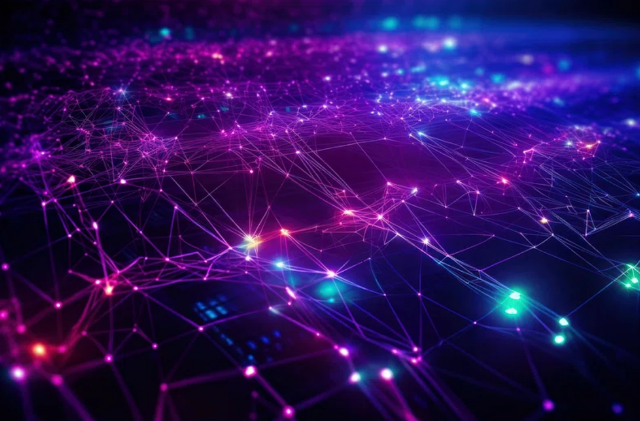Unveiling Deep Reinforcement Learning: From Structure to Real-World Applications
Deep Reinforcement Learning
Deep Reinforcement Learning (DRL) combines Reinforcement Learning (RL) with Deep Learning (DL). In RL, an agent learns to make decisions by performing certain actions and receiving rewards or penalties in return. DL, on the other hand, involves training deep neural networks with multiple layers to understand complex patterns in data. Deep reinforcement learning leverages the strengths of both these methods, using neural networks to approximate the value functions or policies used in RL.
Structure of Deep Reinforcement Learning
In deep reinforcement learning, an agent interacts with its environment in a series of steps. The agent observes the state of the environment, takes an action, and receives a reward based on that action. The goal of the agent is to maximize the cumulative reward over time. The agent uses a deep neural network to predict the value of different actions or to directly map states to actions.

How Deep Reinforcement Learning Works
Initialization - The agent starts with a policy or value function, often initialized randomly.
Interaction - The agent interacts with the environment by taking actions and observing rewards and new states.
Learning - The agent updates its policy or value function based on the feedback received (rewards) and the observed transitions.
Iteration - This process is repeated iteratively, with the agent gradually improving its policy to maximize cumulative rewards.
One popular algorithm in deep reinforcement learning is Deep Q-Networks (DQN), which uses a neural network to approximate the Q-value function. Another approach is Policy Gradient methods, which directly optimize the policy by using gradients obtained from the reward signal.
Applications of Deep Reinforcement Learning
Synthetic neural networks are trained using a training set. For example, suppose you want to teach a synthetic neural network to recognize a cat. The network is shown thousands of different images of cats to learn to identify a cat. Once the network has been trained enough using images of cats, you need to check if it can correctly identify cat images. This is done by having the network classify images, deciding whether they are cat images or not. The output obtained by the network is corroborated by a human-provided description of whether the image is a cat image. If the network identifies incorrectly, backpropagation is used to adjust what it has learned during training. Backpropagation fine-tunes the weights of the connections in the network's units based on the error rate obtained. This process continues until the network can correctly recognize a cat in an image with minimal error rates.
Gaming
One of the most well-known applications of deep reinforcement learning is in gaming. Deep reinforcement learning algorithms have been used to train agents that can play complex games like Go, Chess, and video games at a superhuman level. For example, Google's AlphaGo used deep reinforcement learning to defeat the world champion in the game of Go, showcasing the potential of these algorithms.
Robotics
In robotics, deep reinforcement learning is used to train robots to perform tasks that require complex decision-making and adaptability. For instance, robots can learn to navigate through environments, manipulate objects, and perform tasks autonomously by using deep reinforcement learning algorithms. This has applications in manufacturing, healthcare, and even household chores.
Autonomous Vehicles
Deep reinforcement learning is also a key technology in the development of autonomous vehicles. Self-driving cars need to make real-time decisions based on their surroundings to navigate safely and efficiently. Deep reinforcement learning enables these vehicles to learn from vast amounts of data and simulations, improving their ability to handle various driving scenarios.
Finance
In the financial sector, deep reinforcement learning is used for algorithmic trading, portfolio management, and fraud detection. By continuously learning from market data, deep reinforcement learning algorithms can adapt to changing market conditions, making more informed trading decisions and optimizing investment strategies.
Healthcare
In healthcare, deep reinforcement learning is applied to personalized treatment plans, medical diagnosis, and drug discovery. For example, deep reinforcement learning can help in developing personalized treatment strategies for patients by continuously learning from their medical data and adjusting treatment plans accordingly.
Energy Management
Deep reinforcement learning is also used in energy management systems to optimize the use of resources and improve efficiency. For instance, smart grids can use deep reinforcement learning to balance supply and demand, reducing energy waste and costs.
In Closing
Deep Reinforcement Learning is a powerful and versatile technology that combines the decision-making capabilities of Reinforcement Learning with the pattern recognition abilities of Deep Learning. By leveraging the strengths of both fields, deep reinforcement learning has shown remarkable success in a wide range of applications, from gaming and robotics to finance and healthcare. As research and development in this area continue to advance, we can expect to see even more innovative and impactful applications of deep reinforcement learning in the future.Find more about AI and ML here: ML AI News.
Machine Learning Artificial Intelligence News
https://machinelearningartificialintelligence.com
AI & ML



Sign Up for Our Newsletter